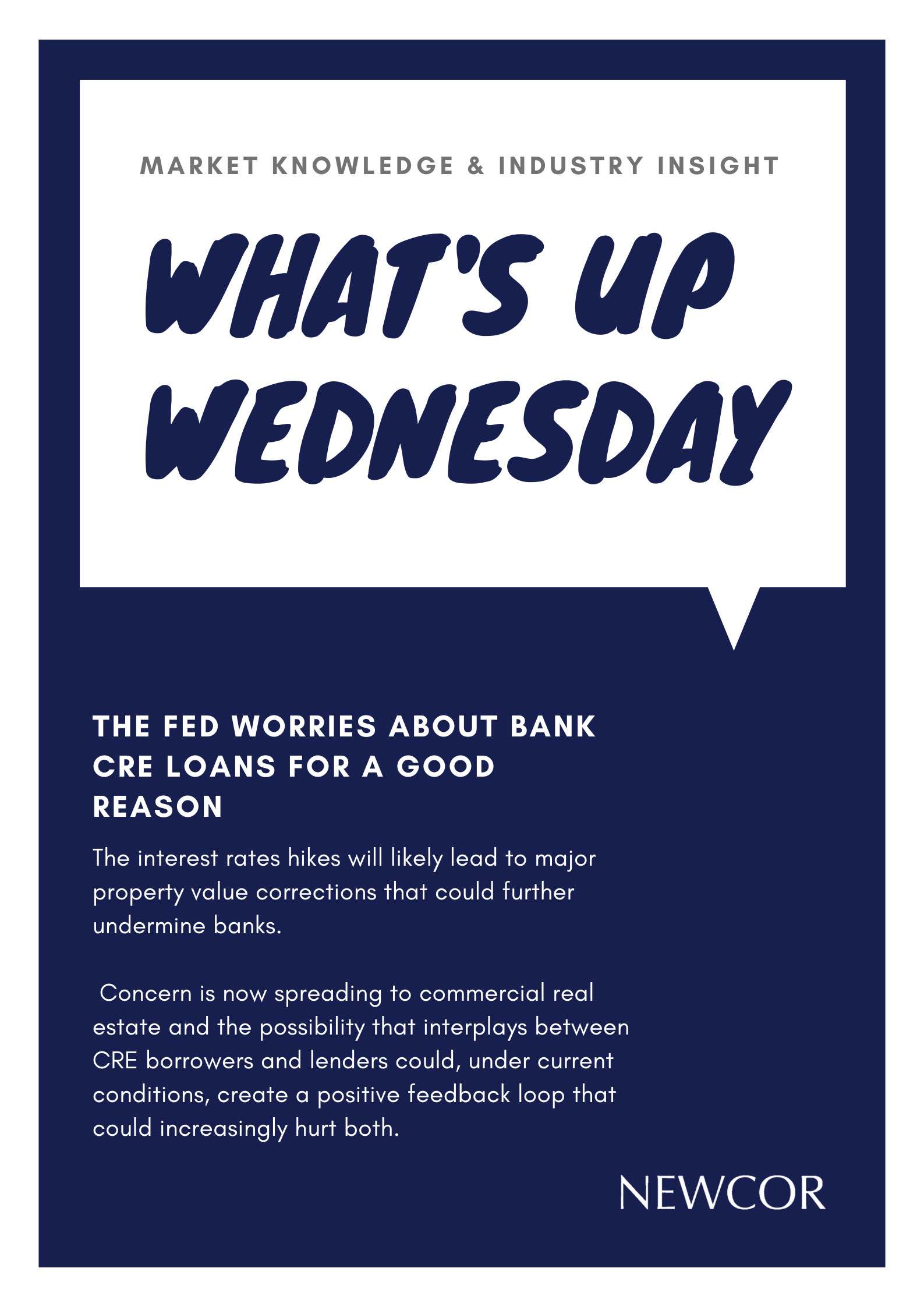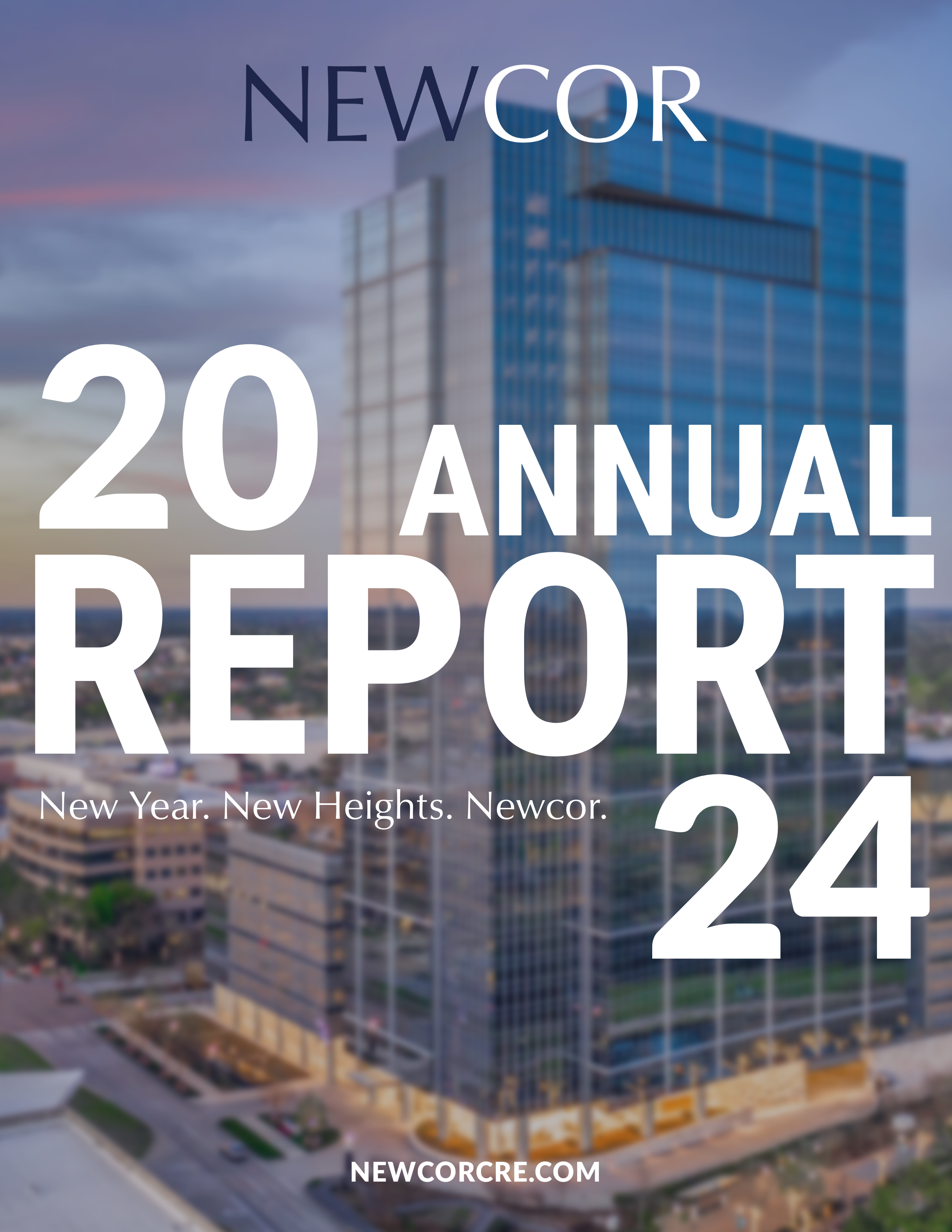What's Up Wednesday: The Fed Worries About Bank CRE Loans

What's Up Wednesday:The Fed Worries About Bank CRE Loans for a Good Reason
The interest rates hikes will likely lead to major property value corrections that could further undermine banks.
The Federal Reserve and other regulators have been focused of late on bank problems, and well they should. But concern is now spreading to commercial real estate and the possibility that interplays between CRE borrowers and lenders could, under current conditions, create a positive feedback loop that could increasingly hurt both. The signs are in two Fed reports.
In its May 2023 Financial Stability Report, the Fed looked at the exposure of financial institutions to CRE debt. The report acknowledged reduced demand for office space—and lack of understanding as to how that will ultimately play out—and vulnerability to higher interest rates that could prevent refinancing. “With CRE valuations remaining elevated … the magnitude of a correction in property values could be sizable and therefore could lead to credit losses by holders of CRE debt,” they wrote.
Although that seems to run counter to the recent breakdown by Moody’s Analytics, the Fed doesn’t include multifamily mortgages “because the fundamentals of that sector are substantially different.” Major devaluations of nonresidential CRE properties could then cause a big problem for banks that hold CRE debt. Plus, devaluations could likely trigger basic covenants, putting borrowers out of LTV requirements.
But as it turns out, the LTV question is more complicated than it might seem. “As of the fourth quarter of 2022, current LTVs (that is, ratios that incorporate recent estimates of building value rather than building value at loan origination) of mortgages backed by office and downtown retail properties were in the range of 50 to 60 percent, on average, for the loan-level data that are available,” the Fed wrote. The reason was that for properties bought before the pandemic, “values rose materially,” which doesn’t help if values for some property types—say B and C Class offices—took a tumble.
And then, in the April 2023 Senior Loan Officer Opinion Survey on Bank Lending Practices, SLOOS for short, “banks reported tighter standards and weaker demand for all commercial real estate (CRE) loan categories.” The “most frequently reported changes pertaining to wider spreads of loan rates over banks’ cost of funds and lower loan-to-value ratios.”
“Regarding the second set of special questions about reasons for changing standards on all loan categories in the first quarter, banks cited a less favorable or more uncertain economic outlook, reduced tolerance for risk, deterioration in collateral values, and concerns about banks’ funding costs and liquidity positions,” the Fed wrote.
The tightening also isn’t over as “major net shares” of banks expect to tighten all categories of CRE loans this year.
Looking at the second report, Moody’s Analytics in a report projected trends for CRE lending. On multifamily: “Continued weakening demand along with lenders continuing to tighten standards as vacancies rise modestly.” For nonresidential CRE: “Very weak demand will continue and lenders will continue to tighten standards amid weaker economic forecasts along with weakness in certain sectors.”
That brings things to the potential for positive feedback—which means forces that will push conditions to get even worse.
“Up until now, banks under pressure have had critical weaknesses that jeopardized their ability to operate,” Lauren Goodwin, senior director of multi-asset solutions at New York Life Investments wrote in emailed comments. “Banks were paying more for their funding than they earned on their assets.”
“The more recent round of banks under pressure are different; they have viable businesses, stable deposits, and manageable funding costs,” she continued. “While each bank has some area of vulnerability, such as loan losses or uninsured deposits, these vulnerabilities would not necessarily be problematic under normal circumstances. Nonetheless, markets appear to be zeroing in on those exposures, and regardless of business model, deposits are vulnerable to flight. Price action may very well exacerbate banking sector stress by creating a self-fulfilling prophecy of deposit flight.”
And something that could trigger deposit flight and bank stability is the prospect of large CRE loan losses, which would then upset the base of lending and create the sucking sound of a vicious circle vortex.
Source: GlobeSt.com
Be sure to follow us on LinkedIn for the most current #WhatsUpWednesday market knowledge & industry insight.
Have questions or comments?
Reach out to us at 281-210-3090 or
When you subscribe to the blog, we will send you an e-mail when there are new updates on the site so you wouldn't miss them.



